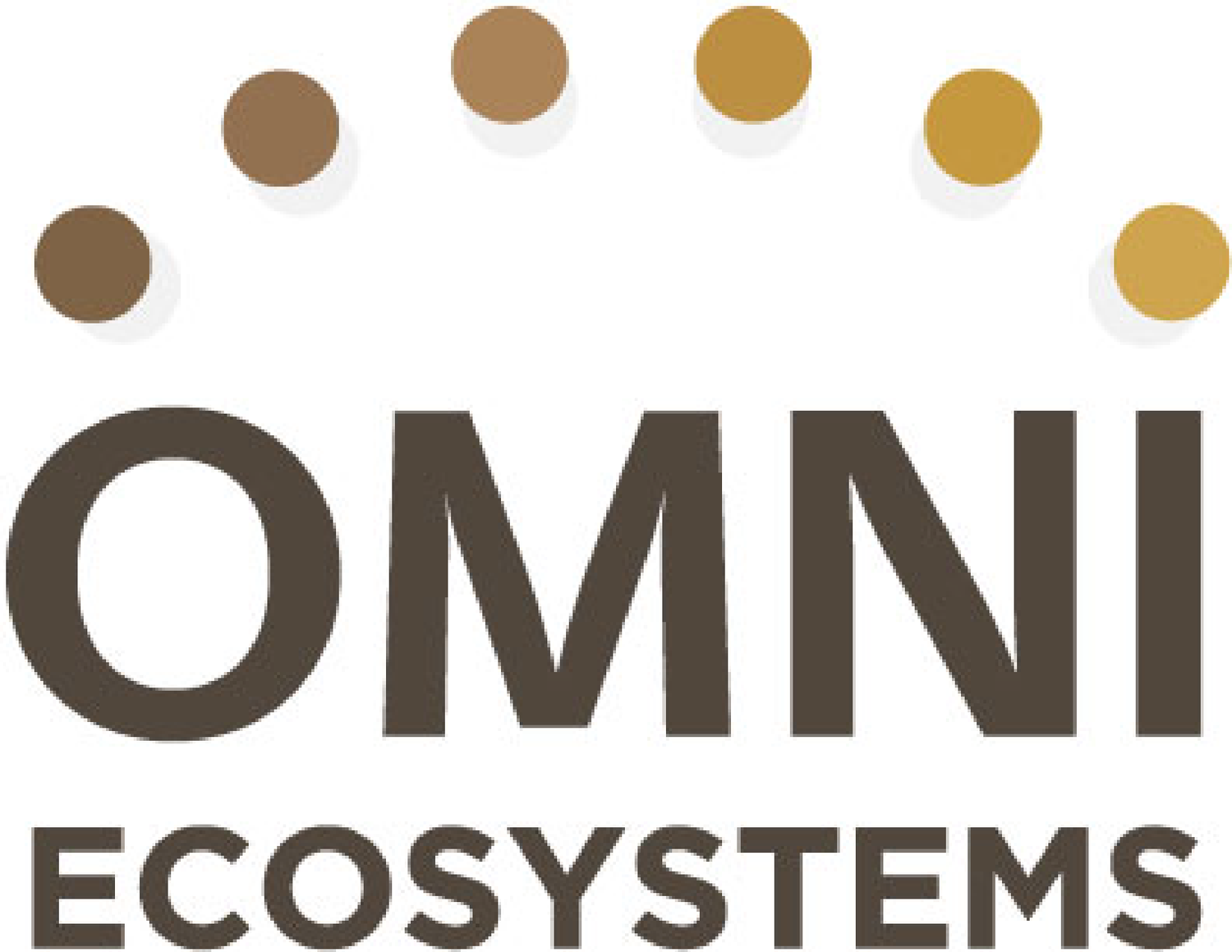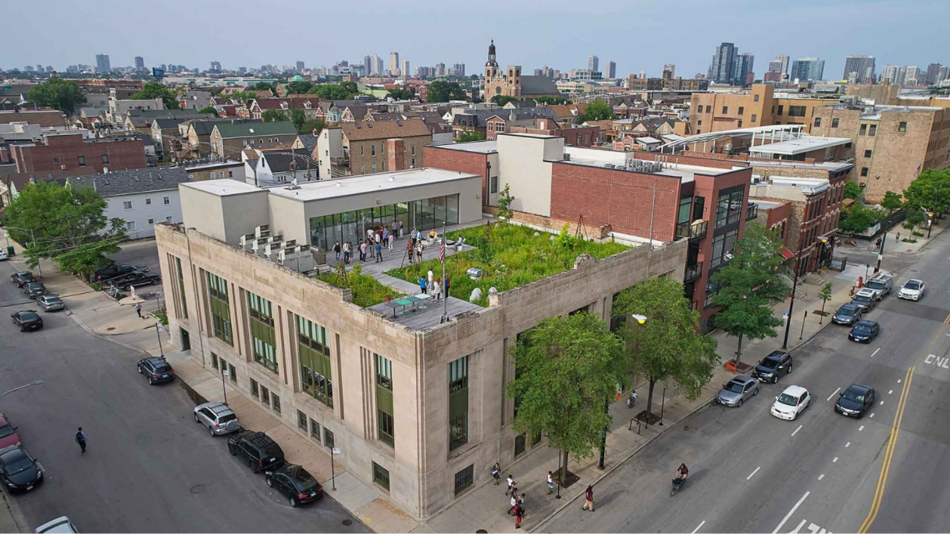Looking Back: Studio Gang’s Wheat Prairie
When Studio Gang relocated its headquarters to Chicago’s Noble Square, the architecture firm engaged Omni to install a rooftop garden atop its new space — a landmark building that formerly housed the Polis National Alliance.
Designed to grow a meadow with a variety of native species including wildflowers, shrubs, grasses, and trees, Omni seeded the garden in fall of 2015. This was a late start for sowing, so Omni used winter wheat as a cover crop to help the ecosystem establish and protect Omni Infinity Media through the cold season.
The crop wound up flourishing into an abundant wheat field the following summer, leading to the first-known rooftop grain harvest.
Omni and Studio Gang collaborated with the Roof Crop, Urban Habitat Chicago, Baker Miller, and a local after-school program funded by After School Maters and One Summer Chicago to ensure the crop did not go to waste. Students hand harvested the wheat and threshed the yield — separating the chaff from the grain, and professional millers and bakers at Baker Miller ground the grain into 66 pounds of high-quality pastry flour baked it into cookies that the students sold as a fundraiser for their after-school program. The initiative was publicly recognized by Chicago Mayor Rahm Emanuel with a press conference and visit to Omni’s former headquarters.
“For 10,000 years, civilization has been growing wheat, but we’re taking it to new heights; it’s an important advancement in addressing food security issues in urban areas.”
—Michael Repkin, Omni Ecosystems
Today, Studio Gang’s rooftop is flourishing as a vibrant wildflower meadow that serves multiple functions, from managing stormwater to serving as a visual amenity and providing Studio Gang’s team with a connection to nature within their workplace.
Taking Urban Agriculture Beyond Leafy Greens
Despite being one of the most vital staple foods on the planet and a predominant crop for major civilizations through all of history, wheat is often an overlooked capability of green roof agriculture. Studio Gang’s wheat prairie demonstrates that green roofs can support more than just vegetable and herb production.
By 2050, the United Nations predicts that approximately two-thirds of the world’s population will reside in urban areas. With the global population expected to reach more than 9.7 billion by 2030, increasing peoples’ access to nearby food sources is critical to combat climate change and fight food insecurity, especially in densely populated areas and communities that are considered food deserts.
Urban agriculture has the capability to do this while alleviating additional environmental issues, including increasing vegetation cover, decreasing the urban heat island effect, and ultimately improving the livability of cities.
The Omni Green Roof at Studio Gang’s HQ demonstrates rooftop urban agriculture’s ability to support efficient and sustainable production of staple crops, such as wheat. These high calorie, dense foods comprise most global diets for both humans and livestock, so this project shows an important example of both the viability and the co-benefits of urban agriculture.
How Omni Was Able To Do It
Rethinking the benefits of intensive and extensive green roof systems, Omni Green Roofs produce a comprehensive system that provides unmatched outcomes. Unlike other lightweight green roofs, Omni Green Roofs are differentiated by their functionality — as a plant-focused system, our green roofs can grow and support various ecosystems at depths and weights unmatched by other green roof approaches.
Omni Infinity Media — the most advanced replication of soils — removes limitations that traditionally exist for on-structure landscaping and supports resilient long-term plant communities. With high stormwater retention and ultra-lightweight qualities, this optimized engineered growing media delivers greater outcomes at less weight.
These two Omni Products provide solutions at the forefront of innovation and challenge the current limitations of green infrastructure, as done at Studio Gang’s rooftop. This is a living example one of Omni’s core purposes — doing work that measurably and substantially betters the environment, reduces humans’ impact on the planet and climate, and improves livability of cities.



